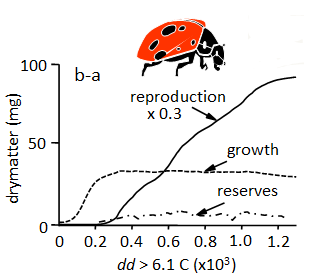Analysis of invasive insects: links to climate change
Climate change is expected to alter the geographic distribution and abundance of many species, to increase the invasion of new areas by exotic species and, in some cases, to lead to extinction of species. This chapter reviews some of the links between invasive insects and climate change. The effects of climate change on insect pest populations can be direct, through impacts on their physiology and behaviour, or indirect, through biotic interactions (i.e. bottom-up and top-down eff ects). Anthropogenic climate and global change is expected to be a major driver in the introduction, establishment, distribution, impact and changes in the efficacy of mitigation strategies for invasive species. To address these problems, we must be able to predict climate change impacts on species distribution and abundance. Commonly used ecological niche modelling approaches have implicit assumptions about the biology of the target species and attempt to characterize the ecological niche using aggregate weather and other factors in the area of recorded distribution. More holistic physiologically based demographic modelling approaches explicitly describe the biological and physiological responses of species to weather and the species they interact with on fine temporal and spatial scales. The geographic distribution and relative abundance of four invasive insect pests are reviewed under observed and +2°C weather scenarios across the USA and Mexico: the tropical New World screwworm, the pink bollworm, the Mediterranean fruit fly (i.e. medfly) and the olive fly. The distribution of the olive fly is examined across the Mediterranean basin to illustrate the transferability of the model to analyses of new regions and climate change scenarios.
Gutierrez A.P., Ponti L., 2014. Analysis of invasive insects: links to climate change. In: Ziska L.H., Dukes J.S., (eds.), Invasive Species and Global Climate Change. CABI Publishing, Wallingford, UK. ISBN: 978-1780641645. http://www.cabi.org/bookshop/book/9781780641645
Gutierrez A.P., Ponti L., 2014. Analysis of invasive insects: links to climate change. In: Ziska L.H., Dukes J.S., (eds.), Invasive Species and Global Climate Change. CABI Publishing, Wallingford, UK. ISBN: 978-1780641645. http://www.cabi.org/bookshop/book/9781780641645
 |
| Dry matter partitioning in a ladybeetle PBDM. |

Comments
Post a Comment